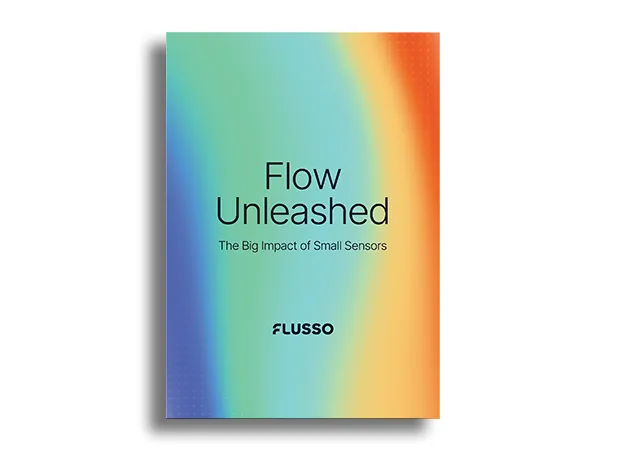3 March 2025
Sustainable HVAC Design | Engineering a Green Future
Sustainable HVAC Design | Engineering a Green Future
The HVAC industry — like every other industry across the globe — is re-evaluating its best practices through the lens of environmental sustainability.
HVAC systems condition, regulate and ventilate air. By drawing on a host of emerging technologies, enhanced efficient practices, and strategic planning, HVAC design can change and play a pivotal role in shaping a greener future. The industry is very much at the forefront of ensuring people’s comfort and well-being without compromising the environment.
Sustainable HVAC design hinges on a plethora of factors, including underlying environmental considerations, accurate calibration, and diligent system upkeep. Navigating factors like ageing, abrasive environmental conditions, and mechanical wear is paramount to engineering a greener future in this space. Flusso’s sensors also have a big part to play, providing accurate data for greater HVAC system efficiency.
Key design and development principles
A note on passive design integration
Several passive design strategies can enhance the pursuit of sustainable HVAC design before the HVAC system is even required. In the development of new settlements, offices, or other sites, considering things such as natural ventilation, daylighting, building orientation and window placement automatically reduces the need for mechanical heating and cooling, thus minimising the hours at which the HVAC system is required.
We recognise that these considerations are already at play in building developments around the world (and often out of the hands of HVAC manufacturers specifically), but they are truly key to environmental sustainability thanks to reduced solar warming.
Energy efficiency through design
Sustainable HVAC design is not possible without a major focus on each system’s energy efficiency. For decades, traditional HVAC systems — be they compact or building-wide — have tended to consume large amounts of energy and kick out significant carbon emissions in the process of ventilating spaces. Fortunately, the game is changing.
Components core to indoor air quality
Key components for greater energy efficiency include high-efficiency heat pumps, variable flow systems and speed motors, and advanced control algorithms, each of which is becoming custom in modern, intelligent HVAC systems. These energy-efficient technologies have the power to reduce the reliance on fossil fuels, thereby lessening environmental impact whilst lowering operational costs.
Sustainable HVAC design improves indoor air quality and thus circumnavigates various health issues, including respiratory problems and allergies. There are a host of advanced filtration technologies now on the market, including high-efficiency particulate air filters and ultraviolet germicidal irradiation, both of which work to remove pollutants and pathogens from indoor air.
Smart building design
Embracing smart building technologies and data analytics will allow HVAC systems to optimise their own performance with greater efficiency. Sensors, actuators, and advanced control algorithms can dynamically adjust the HVAC’s operation based on real-time conditions such as occupancy, outdoor temperature, and humidity levels. This proactive approach not only improves energy efficiency but also enhances comfort and indoor air quality while reducing maintenance requirements.
Evidently, intelligent HVAC systems will benefit massively from Flusso’s standout sensor technology. More on that later.
Renewable energy
This one seems self-evident, but integrating renewable energy sources into the development and operation of HVAC systems will be invaluable as the industry drives towards bolstering its green credentials.
Solar panels, geothermal heat pumps, and wind turbines each enable buildings to generate clean energy on-site, reducing reliance on the grid and lowering carbon emissions. Plus, enhanced energy storage systems allow buildings to store excess energy for later use, enhancing both efficiency and resilience.
Lifecycle considerations
Alongside the aforementioned points, HVAC system developers and environmental consultants will benefit from comprehensively reviewing broader system materials, the installation process, upkeep, and end-of-life disposal. A shift towards equipment with low embodied carbon and primarily recyclable materials will set a precedent for reduced environmental impact throughout the lifecycle of the HVAC system.
Sustainable HVAC development: closer collaboration and upskilling
Beyond strictly ‘design’ principles, the HVAC industry can push towards a more sustainable future through improved collaboration and innovation.
At a conceptual level, an uptick in research and development budgets — plus a broader range of cross-industry expertise — will help the HVAC space adopt efficiency components, materials, and design ideas. Education and training play a big role in promoting a sustainable future for HVAC, as well as accelerating us towards widespread adoption and implementation of green technologies. Continuous learning and certification programs help professionals stay updated on the latest advancements and best practices in sustainable HVAC design.
With designers, manufacturers, engineers, architects, and policymakers all pulling in the same direction, HVAC will be set to implement cutting-edge technologies that align with eco-friendly building codes, and it will do so far more swiftly.
Incentives and subsidies
As with so many environmental initiatives, for businesses to change well-versed ways of doing things, governments often need to introduce regulations and incentives that drive change. Engineering a green future in the HVAC space will hinge as much on tax incentives, rebates, and subsidies as it will on proactive sustainable design from manufacturers.
Having formal structures in place to encourage energy-efficient HVAC systems and renewable energy technologies will drive market demand for sustainable solutions and encourage those in the space to adopt a more environmentally conscious approach, the same way that building codes and standards are impacting infrastructure more broadly.
Flusso’s standout sensor technology
As highlighted in previous sections, sensors will be paramount to the future of sustainable HVAC design, playing into energy conservation by ensuring that the system operates efficiently.
Flusso’s airflow and air velocity sensors deliver real-time data to the HVAC system that allows it to optimise fan speeds and dampers, hence delivering the right amount of conditioned air to space, zone or room. At a fundamental level, this prevents overworking the system and wasting energy.
Our sensors provide data to ensure balanced air distribution, detect faults and abnormalities, and maintain optimal airflow rates, leading to improved comfort levels and significant energy efficiency over time.
A new era of environmental stewardship
Sustainable HVAC design has the power to make major changes in the industry, pushing manufacturers and users to enhance their energy efficiency both ahead of installation and throughout use.
You can read about other major HVAC trends in our blog here.
Through the deployment of sustainable materials, the adoption of smart technologies, the integration of renewable energy and much more besides, the HVAC industry can lead the way in reducing carbon emissions, mitigating climate change, and creating healthier indoor environments.
We are proud to be playing a part in the HVAC industry’s new era of environmental stewardship through the use of our miniature sensor technology, bringing robust and reliable data to the optimisation of green systems. Learn more about what we have planned by getting in touch.



